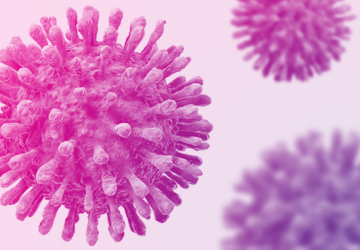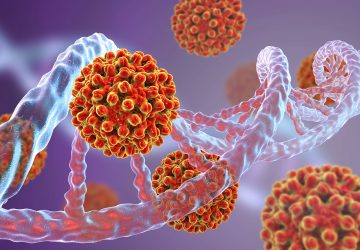Spot On Sciences‘ Hemaspot product is helping the World Hepatitis Alliance (WHA) reach its goal of eliminating hepatitis B and C in the next decade by enabling the alliance’s 270 member organizations to cost-effectively diagnose hepatitis and monitor treatment in rural areas across the globe, according to Emily Hanson, Spot On’s head of business development. Founded in Austin, Texas, in 2010, Spot On Science was acquired by San Francisco-based Tribeca Companies in August 2018.
The Hemaspot line of products provides simple, integrated collection and storage of blood and bodily fluids in a secure format that minimizes the risk of contamination.
“As we learned at last week’s Liver Congress in Vienna, Austria, our product is having a huge impact in global public health policy. It has become central to holding governments accountable to their commitment to eliminate hepatitis B and C by 2030, as it provides a way to elevate patient care, open doors for researchers, support advocacy groups and provide public policy metrics,” Hanson told BioWorld MedTech.
The World Hepatitis Alliance brings together more than 270 organizations in 91 countries with the goal of eliminating hepatitis by reducing transmission and curing those infected with the viruses. While many governments and policy organizations have expressed a commitment to hepatitis eradication, they have not had the solutions that enable them to translate those commitments into actionable plans.
“With Hemaspot, there is now the availability of an affordable tool that governments can take on, which are critical to their success in reaching these goals,” Hanson noted.
Two Products
Spot On has two primary products, both of which have CE mark approval but do not yet have U.S. FDA clearance.

The HemaspotTM-HF blood collection device is a credit-card sized cartridge that contains absorbent paper and a desiccant covered with an application surface that has a small opening that allows blood to enter. After gathering three drops of blood, a patient closes the cartridge and the desiccant dries the sample. The sample can be shipped or stored safely for years. A tamper-resistant latch ensures integrity. The paper’s eight-bladed fan shape replicates eight copies of the blood sample and eliminates the need to punch out a sample from a dried blood spot card. A higher volume version is also available.
 HemaspotTM-SE blood separation device separates blood from a finger stick into whole blood cells and serum and then stores the samples. Red blood cells, platelets and leukocytes concentrate at the center of the spiral paper form, while serum and its components dominate on the outer arm.
HemaspotTM-SE blood separation device separates blood from a finger stick into whole blood cells and serum and then stores the samples. Red blood cells, platelets and leukocytes concentrate at the center of the spiral paper form, while serum and its components dominate on the outer arm.
Four Verticals
Four key verticals dominate the company’s plans for its products:
- Global public health / infectious disease control
- Human identification
- Research
- Wellness
“Within each of these, there are so many different avenues where the product could have massive impact,” Hanson said. “We could build out a year’s worth of plans based on the tons of opportunities just in global public health and we’re just starting to dig into the forensic and non-forensic applications within human identification.”
Others see the potential for the products as well. “Even through the language barrier, people were so excited just from the image of the device on an Ipad and our videos. They could immediately connect how they could use it in their world, whether that was as an activist, physician or in a health ministry,” Hanson said.
Already, Hemaspot is used in research labs all over the world as scientists evaluate the use of the simple device to help public health ministries spot epidemics, distinguish disease strains and measure the success of treatment plans.
The device has the potential to bring customized medicine to a broad population, said Nima Nejad Shiraz, vice president of finance and operations at Tribeca and chief operating officer of Spot On Sciences.
While many patients in the U.S. today may have the resources to monitor and customize medication, “others need to do whole blood testing. That’s impossible to ship. Dried blood spot technology has been around for decades, but its utility has been limited by the availability of lab technicians and the inability to reliably dry and ship samples without contamination. It’s estimated that 50% of dried blood spot tests have to be thrown away,” Shiraz said.
“With Hemaspot, there’s the ability for patients to do it by themselves without a trained technician and then close and lock the lid to preserve the integrity of the sample.”
That could be a game changer in much of the world, Shiraz noted. “If you look at HIV within Africa, you have 36.9 million patients who are HIV positive. Of those, 9 [million] to 10 million are not aware they have the virus, and 21 million are receiving therapy. A significant percentage don’t have reasonable access to testing. They’d have to walk 10 miles, cross a river, take a bus to get tested,” he said. “With Hemaspot, a public health worker can throw a bunch in a backpack on a motorcycle in 40 degree C weather, take samples and bring them back without contamination.
Competition
Spot On is not the only company trying to solve the issues surrounding remote blood collection and shipping. Neoteryx LLC’s Mitra devices use microsampling cartridges to collect a wide range of body fluids. The U.S. FDA class I devices are available packed with a desiccant or as part of a collection kit.




